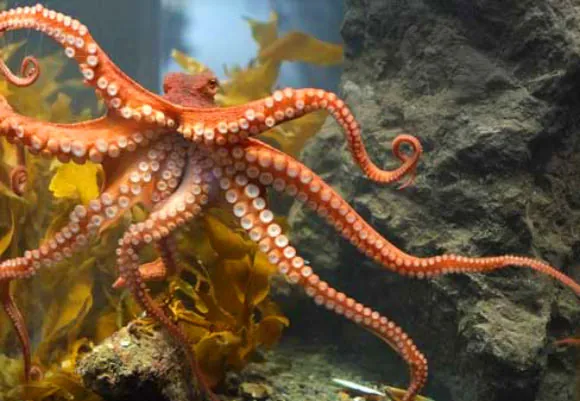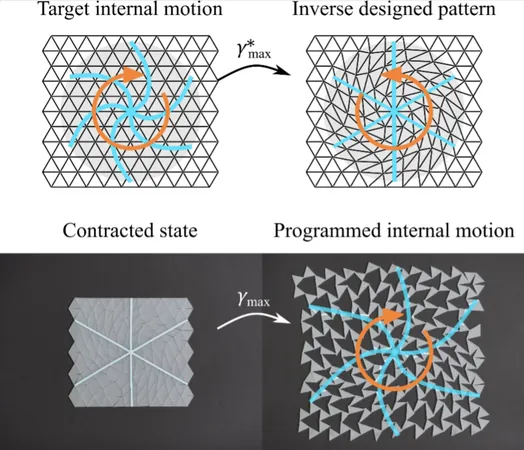
Breakthrough Study Reveals Octopus Arms Have Advanced Nervous System Segmentation for Masterful Movement
2025-01-15
Author: John Tan
Introduction
In an intriguing revelation, researchers at the University of Chicago have uncovered the extraordinary way octopuses control their eight arms, each of which displays remarkable dexterity and a unique structural adaptation. Known for their intelligence and adaptability, octopuses face a significant motor control challenge due to their distinct anatomy. Each arm serves as a muscular hydrostat—a soft-bodied structure capable of precision movements without a rigid skeleton.
Key Findings of the Study
With this complexity in mind, scientists have found that the nervous system responsible for octopus arm movements is segmented, allowing these fascinating sea creatures to exhibit fine control across their limbs. This segmentation enables octopuses to deftly explore their surroundings, grasp objects, and efficiently capture prey, showcasing their unparalleled evolutionary adaptations.
Research Methods
Professor Clifton Ragsdale, a leading researcher on the study, explained, “If you’re going to have a nervous system that’s controlling such dynamic movement, that’s a good way to set it up.” His team conducted an in-depth analysis of the California two-spot octopus (Octopus bimaculoides), a small species native to the Pacific coast.
The research team utilized advanced imaging techniques to explore the structure of the central nervous system along the octopus arms. Remarkably, they found that the massive quantity of neurons within the arms exceeds the total found in the brain of the animal itself. These neurons are organized within what is termed an "axial nerve cord" (ANC), which forms distinct segments, each corresponding to a muscular section of the arm.
Discoveries in Neural Organization
As they attempted to study tissue samples, initial failures led the researchers to focus on lengthwise strips of the arm, which revealed an unexpected articulation. They discovered that these neuronal cell bodies are organized in column-like segments, similar to a corrugated pipe structure, separated by gaps known as septa. These septa provide pathways for nerves and blood vessels to exit, facilitating efficient muscle control.
“What we see is that nerves from multiple segments connect to various muscle regions,” noted Cassady Olson, a graduate student involved in the study. This organization indicates a coordinated communication system among segments, which enhances the smoothness of movements executed by each arm.
Implications of Sucker Structure
Adding to their findings, the researchers observed that the suckers—sensitive structures on the octopus arms—are wired into this segmented nervous system. Each sucker is equipped with sensory receptors, enabling them to taste and smell objects, a dual capability that combines the functionalities of the hand, tongue, and nose.
Comparative Analysis with Squid
In a broader context, the research also examined the longfin inshore squid (Doryteuthis pealeii), which, like octopuses, have specialized structures for controlling their appendages. Unlike the octopus, the squid's ANC in its non-sucker stalks lacked segmentation, indicating that the segmented ANC structure is vital for motion in sucker-adorned limbs.
Conclusion and Future Outlook
These insights reveal a fascinating glimpse into the evolutionary biology of cephalopods, emphasizing how different species adapt their anatomical structures to thrive in diversely challenging environments. “Evolution consistently seeks optimal solutions for organisms with sucker-laden appendages that require intricate movements,” Professor Ragsdale concluded.
This groundbreaking research not only adds to our knowledge of cephalopod physiology but also invites further exploration into the neurological intricacies of these remarkable creatures. The full study is available in the journal *Nature Communications*, shedding light on the segmental structure that illustrates the cephalopod's evolutionary narrative.
Stay tuned, as the mysteries of the octopus continue to unfold!




 Brasil (PT)
Brasil (PT)
 Canada (EN)
Canada (EN)
 Chile (ES)
Chile (ES)
 Česko (CS)
Česko (CS)
 대한민국 (KO)
대한민국 (KO)
 España (ES)
España (ES)
 France (FR)
France (FR)
 Hong Kong (EN)
Hong Kong (EN)
 Italia (IT)
Italia (IT)
 日本 (JA)
日本 (JA)
 Magyarország (HU)
Magyarország (HU)
 Norge (NO)
Norge (NO)
 Polska (PL)
Polska (PL)
 Schweiz (DE)
Schweiz (DE)
 Singapore (EN)
Singapore (EN)
 Sverige (SV)
Sverige (SV)
 Suomi (FI)
Suomi (FI)
 Türkiye (TR)
Türkiye (TR)
 الإمارات العربية المتحدة (AR)
الإمارات العربية المتحدة (AR)